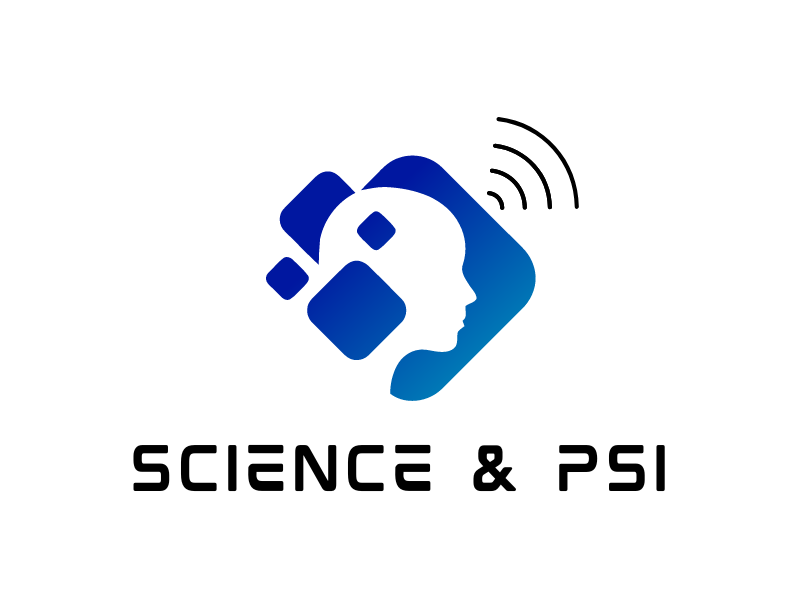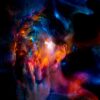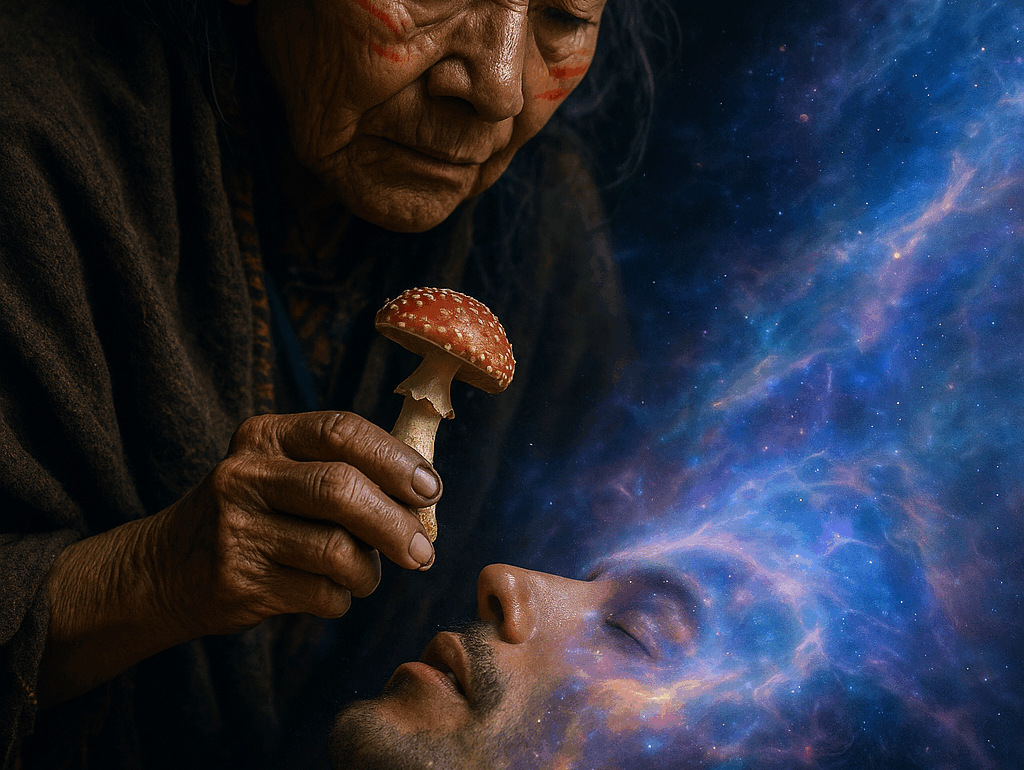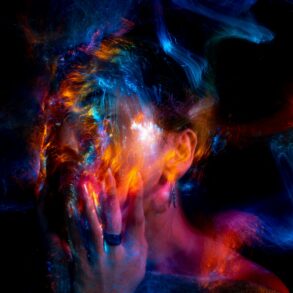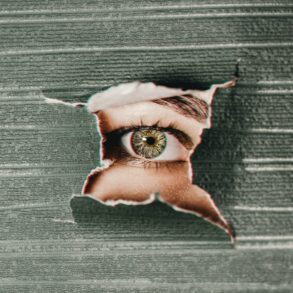Psychedelic-assisted therapy is rapidly emerging as one of the most promising innovations in mental health care. Combining the use of psychedelic substances with structured psychotherapy, this approach is showing significant potential for treating conditions like depression, PTSD, anxiety, and addiction—especially in cases where traditional treatments have failed.
But while the medical world hails this as a revolutionary breakthrough, it’s important to recognize that Indigenous peoples have been using psychedelics as tools for healing, emotional balance, and spiritual well-being for thousands of years. In many ways, modern psychedelic therapy is rediscovering practices that have deep ancestral roots.
Indigenous Wisdom: The Original Psychedelic Healers
Long before clinical trials and FDA approvals, Indigenous cultures across the Americas and beyond had long embraced psychedelic plants and fungi as powerful tools for healing the mind and spirit. For these communities, substances like ayahuasca, peyote, psilocybin mushrooms, and San Pedro cactus were not recreational drugs—they were sacred medicines, woven into ceremonies and communal healing traditions rooted in Indigenous wisdom. Tragically, in 1883, the U.S. government enacted the Code of Indian Offenses, a law that criminalized Native American spiritual practices and sought to suppress their knowledge. It wasn’t until 1978 that the American Indian Religious Freedom Act restored the right of Native peoples to freely practice their spirituality. Even then, it took until 1994 for this law to be amended to explicitly protect the ceremonial use of peyote.
- In the Amazon, ayahuasca ceremonies have long been used to address emotional suffering, trauma, and social disharmony. Healers guide participants through intense visions and purging processes aimed at restoring balance.
- In Mexico and Central America, the Mazatec people have used psilocybin mushrooms in healing ceremonies designed to treat mental distress and seek guidance.
- In North America, Indigenous groups like the Native American Church use peyote in structured ceremonial contexts to promote spiritual clarity, emotional healing, and recovery from addiction.Sacred Peyote Conservation: Respecting Indigenous Traditions – Multidisciplinary Association for Psychedelic Studies – MAPS
For these cultures, the use of psychedelics is not isolated from social and spiritual life; it’s embedded in a framework that emphasizes preparation, guidance, and integration—principles that today’s clinical psychedelic therapies are now seeking to adopt.
What Is Psychedelic-Assisted Therapy?
Psychedelic-assisted therapy in modern settings involves administering a psychedelic compound in a controlled clinical environment, with trained therapists guiding the patient through the experience. Unlike conventional medications taken daily, psychedelics are typically given in just a few high-impact sessions. The process includes preparation, support during the journey, and integration sessions afterward to help the patient make sense of their insights.
Common substances used in current clinical trials include:
- Psilocybin (found in magic mushrooms)
- MDMA (used especially for PTSD)
- LSD (lysergic acid diethylamide)
- Ketamine (already legally used for treatment-resistant depression)
How Does It Work?
Psychedelics temporarily alter brain function in ways that can lead to profound shifts in perception, emotion, and self-awareness. Research suggests several healing mechanisms:
- Neuroplasticity: Psychedelics promote the growth of new neural connections, potentially helping the brain “reset” unhealthy patterns.
- Reduced Default Mode Network (DMN) activity: Quieting the brain’s DMN allows people to break free from rigid thinking and experience a sense of connectedness—often described as ego dissolution.
- Emotional breakthroughs: Patients often revisit and resolve deeply buried traumas, leading to lasting emotional relief.
- Mystical-type experiences: Feelings of oneness and spiritual awakening during sessions are closely linked to positive clinical outcomes—an effect well known in Indigenous traditions.
Reports of Psychic Experiences
Another remarkable, though less publicly discussed, aspect of psychedelic sessions is the frequent reporting of psi-like or psychic phenomena. Many individuals undergoing psychedelic therapy describe experiences such as:
- Telepathy: A sense of mind-to-mind communication, especially between participants or with facilitators.
- Precognition: Receiving visions or knowledge about future events that later come true.
- Clairvoyance: Descriptions of distant places or people, sometimes with details verified afterward.
- Past-life memories: Vivid recollections of identities and experiences from other lifetimes, often carrying emotional significance.
While mainstream science remains cautious about validating these phenomena, they have been widely documented in both Indigenous ceremonial contexts and modern psychedelic research. Psychiatrist Stanislav Grof, a pioneer in psychedelic therapy, argued that such experiences may reflect the non-local nature of consciousness and could play a meaningful role in psychological healing. Grof and other transpersonal theorists suggest that these altered states temporarily open access to dimensions of the mind that are normally filtered out by ordinary waking awareness.
Current Evidence
Clinical trials have produced striking results:
- MDMA-assisted therapy for PTSD has been so effective that the FDA designated it a “breakthrough therapy,” with approval expected soon.
- Psilocybin therapy for major depression has shown remission rates far higher than standard antidepressants, often after just one or two sessions.
- Ketamine clinics already offer relief for people with treatment-resistant depression in many countries.
Safety, Regulation, and Cultural Considerations
When conducted in controlled settings with professional support, psychedelic-assisted therapy is safe and well-tolerated. However, risks do exist, including psychological distress during sessions and the potential for misuse.
Currently, most psychedelics (except ketamine) remain illegal in many countries. However, the tide is turning, with places like Oregon, Australia, and Canada moving toward legal therapeutic use.
As psychedelic therapy expands, many advocates emphasize the need to honor the Indigenous roots of these medicines. There are growing calls to ensure that the benefits from this renaissance also flow back to the Indigenous communities who have safeguarded this knowledge, and to prevent the exploitation or commercialization of sacred traditions.
The Future of Psychedelic Therapy
Psychedelic-assisted therapy represents not just a new treatment but a shift in how we understand and heal the mind. By addressing root causes and fostering deep personal transformation—including encounters with mystical and psychic dimensions—psychedelics may move psychiatry toward holistic models of care, much like those practiced by Indigenous cultures for centuries.
As we move forward, integrating scientific research with respect for ancient wisdom—and an openness to the full range of human experience—could create a more ethical, inclusive, and effective approach to mental health. The frontier of psychedelic therapy offers hope for millions, but it also offers an opportunity to reconcile modern science with ancestral healing traditions and the mysteries of consciousness itself.
References:
Mitchell, J. M., Bogenschutz, M., Lilienstein, A., et al. (2021). MDMA-assisted therapy for severe PTSD: A randomized, double-blind, placebo-controlled phase 3 study. Nature Medicine, 27(6), 1025–1033. DOI: 10.1038/s41591-021-01336-3.
Carhart-Harris, R. L., Giribaldi, B., Watts, R., et al. (2021). Trial of psilocybin versus escitalopram for depression. New England Journal of Medicine, 384(15), 1402–1411. DOI: 10.1056/NEJMoa2032994.
Bogenschutz, M. P., Ross, S., Bhatt, S., et al. (2022). Percentage of heavy drinking days following psilocybin-assisted psychotherapy vs placebo in the treatment of alcohol use disorder: A randomized clinical trial. JAMA Psychiatry, 79(10), 953–962. DOI: 10.1001/jamapsychiatry.2022.2096.
Gasser, P., Holstein, D., Michel, Y., et al. (2014). Safety and efficacy of LSD-assisted psychotherapy for anxiety associated with life-threatening diseases. Journal of Nervous and Mental Disease, 202(7), 513–520. DOI: 10.1097/NMD.0000000000000113.
Zarate, C. A., Jr., Singh, J. B., Carlson, P. J., et al. (2006). A randomized trial of an N-methyl-D-aspartate antagonist in treatment-resistant major depression. Archives of General Psychiatry, 63(8), 856–864. DOI: 10.1001/archpsyc.63.8.856.
Neurological and Psychological Mechanisms of Psychedelic Therapy
Carhart-Harris, R. L., Muthukumaraswamy, S., Roseman, L., et al. (2016). Neural correlates of the LSD experience revealed by multimodal neuroimaging. Proceedings of the National Academy of Sciences, 113(17), 4853–4858. DOI: 10.1073/pnas.1518377113.
Ly, C., Greb, A. C., Cameron, L. P., et al. (2018). Psychedelics promote structural and functional neural plasticity. Cell Reports, 23(11), 3170–3182. DOI: 10.1016/j.celrep.2018.05.022.
Griffiths, R. R., Richards, W. A., McCann, U., & Jesse, R. (2006). Psilocybin can occasion mystical-type experiences having substantial and sustained personal meaning and spiritual significance. Psychopharmacology, 187(3), 268–283. DOI: 10.1007/s00213-006-0457-5.
Indigenous Use of Psychedelic Substances
Reichel-Dolmatoff, G. (1975). The Shaman and the Jaguar: A Study of Narcotic Drugs Among the Indians of Colombia. Philadelphia: Temple University Press. (Classic ethnographic study of Amazonian ayahuasca use)
Stewart, O. C. (1987). Peyote Religion: A History. Norman, OK: University of Oklahoma Press. (Comprehensive history of the Native American Church and peyote use)
Wasson, R. G. (1980). The Wondrous Mushroom: Mycolatry in Mesoamerica. New York: McGraw-Hill. (Detailed account of the traditional use of psilocybin mushrooms by Mazatec and other Mesoamerican peoples)
Sharon, D. (1972). The San Pedro cactus in Peruvian folk healing. In P. T. Furst (Ed.), Flesh of the Gods: The Ritual Use of Hallucinogens (pp. 114–135). New York: Praeger. (Anthropological description of the ceremonial use of San Pedro cactus in Andean healing)
Schultes, R. E., Hofmann, A., & Rätsch, C. (2001). Plants of the Gods: Their Sacred, Healing, and Hallucinogenic Powers (3rd ed.). Rochester, VT: Healing Arts Press. (Ethnobotanical overview of sacred psychedelic plants across various Indigenous cultures)
Legal History and Policy (Protecting Indigenous Psychedelic Practices)
U.S. Office of Indian Affairs. (1883). Rules Governing the Court of Indian Offenses (Code of Indian Offenses). Washington, DC: U.S. Department of the Interior. (Early regulations that criminalized Indigenous ceremonies, including peyote rites)
American Indian Religious Freedom Act, Pub. L. No. 95-341, 92 Stat. 469 (1978). (U.S. federal law affirming Native Americans’ rights to practice traditional religions, including access to sacred sites and objects)
American Indian Religious Freedom Act Amendments of 1994, Pub. L. No. 103-344, 108 Stat. 3125 (1994). (Amendment explicitly legalizing the sacramental use of peyote for members of the Native American Church)
Indigenous Ceremonial and Spiritual Frameworks
Smith, H., & Snake, R. (1996). One Nation Under God: The Triumph of the Native American Church. Santa Fe, NM: Clear Light Publishers. (Insights into the spiritual framework and practices of peyote ceremonies, co-authored by a religious studies scholar and an Indigenous NAC leader)
Estrada, Á. (1981). María Sabina: Her Life and Chants. Santa Fe, NM: Synergetic Press. (Documented oral history and sacred Mazatec mushroom ceremony chants of curandera María Sabina, providing an Indigenous perspective on psilocybin ritual use)
Psychic and Transpersonal Phenomena in Psychedelic Experiences
Grof, S. (1985). Beyond the Brain: Birth, Death, and Transcendence in Psychotherapy. Albany, NY: State University of New York Press. (Explores transpersonal experiences in LSD psychotherapy, including reports of telepathy, precognition, past-life impressions, and other extraordinary states)
Luke, D. (2017). Otherworlds: Psychedelics and Exceptional Human Experience. London: Muswell Hill Press. (Reviews research and anecdotes on paranormal or “exceptional” phenomena—such as telepathic communication, clairvoyant visions, and encounters with non-ordinary entities—reported during psychedelic sessions)
Ethical and Cultural Considerations in Modern Psychedelic Therapy
Celidwen, Y., Redvers, N., Githaiga, C., Calambás, J., Añaños, K., Chindoy, M. E., … & Sacbajá, A. (2023). Ethical principles of traditional Indigenous medicine to guide western psychedelic research and practice. The Lancet Regional Health – Americas, 18, 100410. DOI: 10.1016/j.lana.2022.100410. (Proposes guidelines to ensure Indigenous knowledge, consent, and benefit-sharing are prioritized as psychedelic medicine enters mainstream research and therapy)
George, J. R., Michaels, T. I., Sevelius, J. M., & Williams, M. T. (2020). The psychedelic renaissance and the limitations of a White-dominant medical framework: A call for Indigenous and ethnic minority inclusion. Journal of Psychedelic Studies, 4(1), 4–15. DOI: 10.1556/2054.2019.015. (Highlights the need for cultural humility, inclusion of Indigenous and minority communities, and acknowledgement of Indigenous contributions in the burgeoning field of psychedelic therapy)
